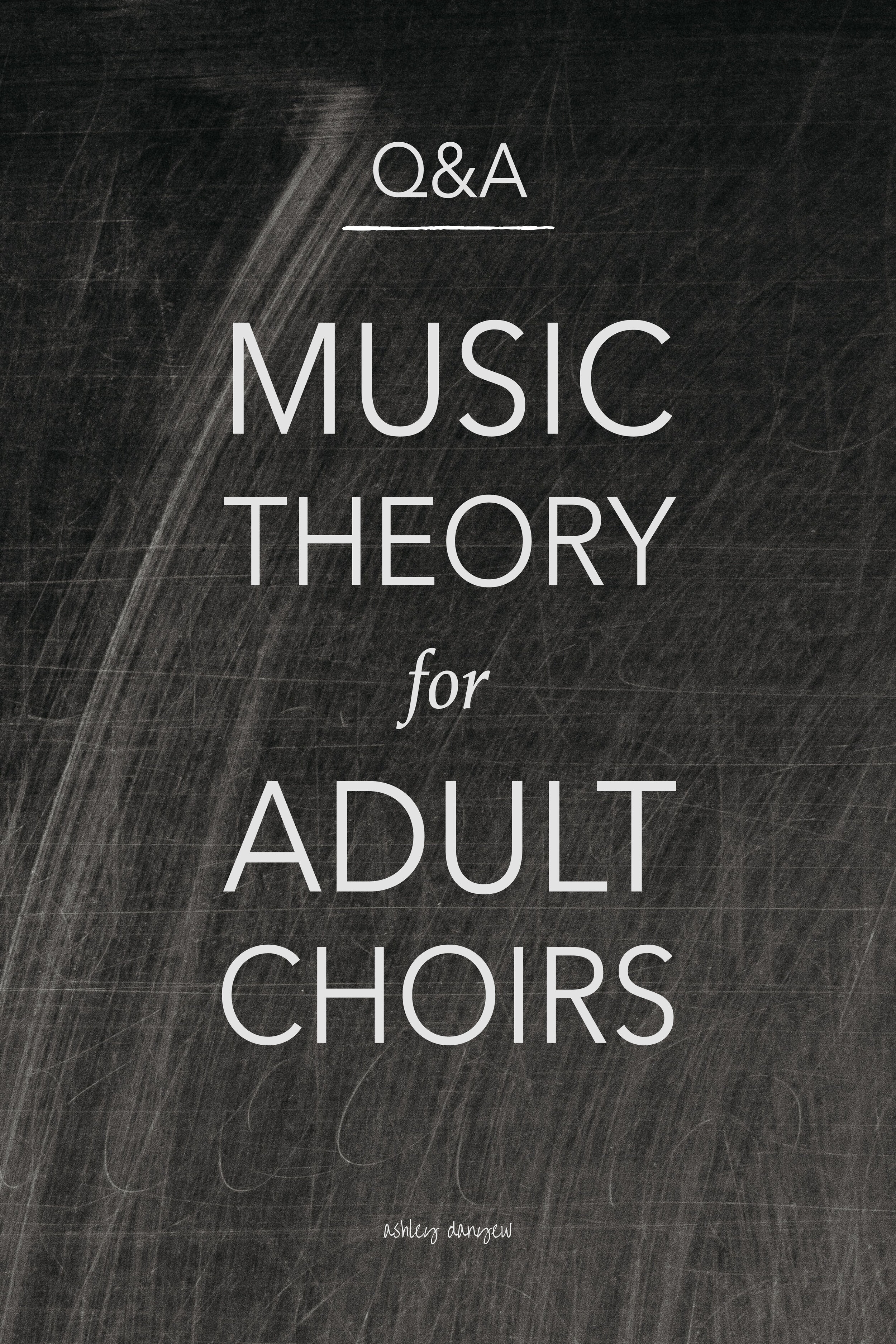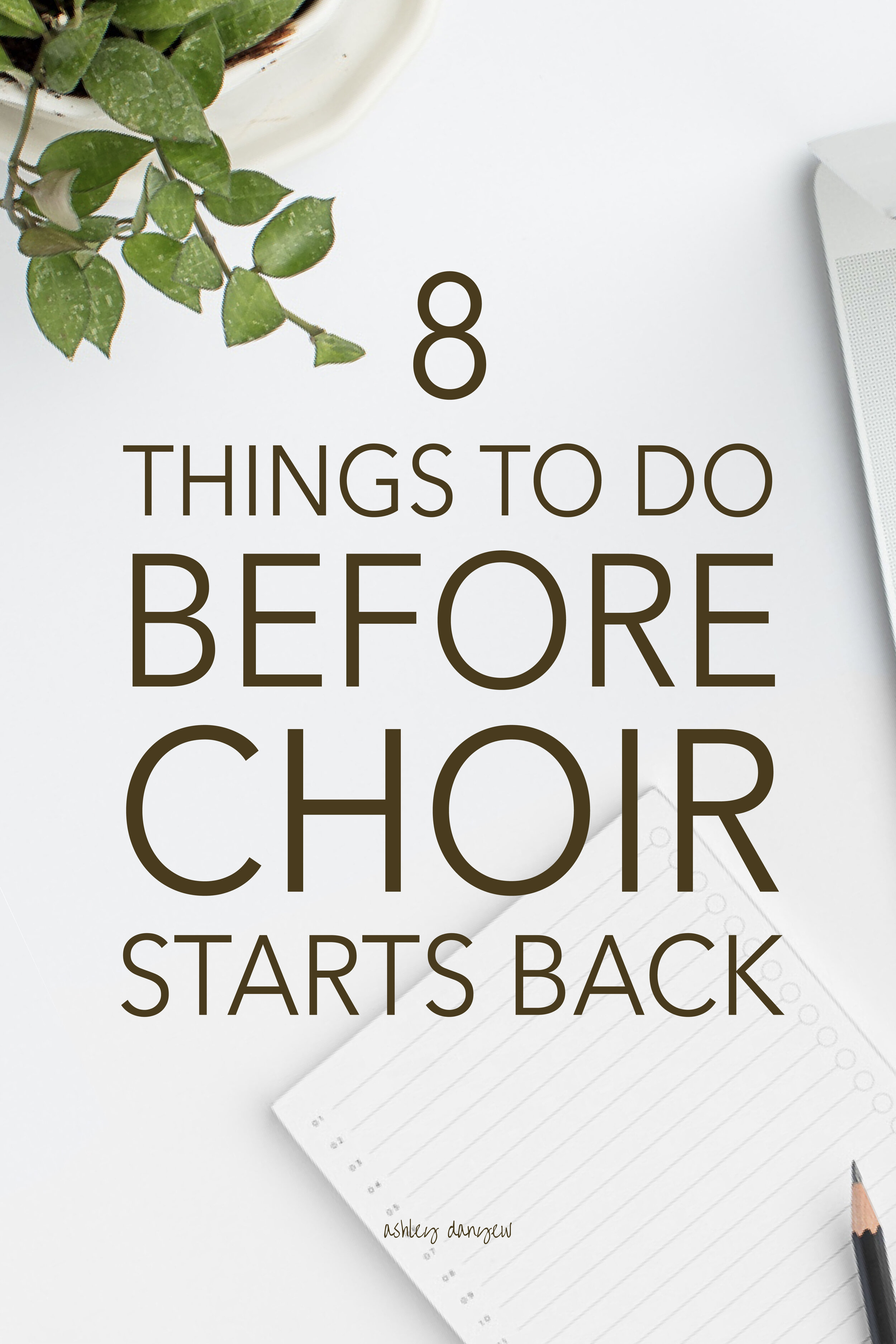Vocal warm-ups are an important part of singing, but they offer many other benefits in a choral setting.
Choral warm-ups are an important and powerful tool to get your group singing together with a good tone, resonance, and proper breath support (source).
Plus, there are many ways to include pedagogy and teaching in these first few minutes of the rehearsal that will save you time later.
Warm-ups are often an after-thought in rehearsal planning and many choirs tend to do the same batch of exercises every week.
There's nothing wrong with this, per se, but if you spend just a few minutes thoughtfully planning warm-ups that prepare concepts from the repertoire, warm-ups can become a valuable teaching tool.
There are several benefits to this approach:
1. Your choir will be more engaged.
By mixing up the warm-up exercises each week, you offer your choir a new challenge every time they come to rehearsal. They will likely pay more attention and be more engaged while singing.
2. You will spend less time introducing new pieces.
By preparing new concepts in the warm-ups (e.g. triple meter or vowel placement or a melodic phrase), your choir will be practicing a challenging spot from a new piece without even realizing it!
3. You can isolate specific choral singing skills.
During warm-ups, you can focus on tone and resonance and remind singers about taking deep, low breaths. You can practice part-singing or singing in canon. Choir members can focus on their sound without being distracted by music reading.
Ready to start planning?
Today, I'm sharing my go-to list of choral warm-ups. These are tailored to adult church choirs, but could easily be used by community choirs or youth choirs (some even work well with children's choirs!). Happy singing!
*Note: The warm-ups in this post are written in musical shorthand (scale degrees). If you think of a C-major scale, 1=C, 2=D etc.
Looking for warm-ups written in full musical notation? Download the free eBook version of this post (or click the image below).
Intervals
1. Ascending 4th: 5 8 76 54 32 1 ("hal-le-lu-jah")
2. Minor 3rd + descending 5th: 1 flat-3 2 4 5 1 ("ma-loo")
3. Major 3rd + descending 5th: 13 24 5 1 ("al-le-lu-ia, a-men")
4. Major 3rd: 13 24 35 46 5432 1 ("halle, halle... lu-jah")
5. Ascending 5th: 1 5--4321 ("me-ah" or "zee-ah")
6. Descending 5th: 51 54 32 1 ("mah-meh-mee-moo")
7. Descending 3rds: 5342 3127 1 ("na nee no nee")
8. Stepwise motion: 5434 5432 1 ("nee neh nee neh noo")
9. Interval training, ascending: 12 13 14 15 16 17 11 (octave) (sung on numbers)
10. Interval training, descending: 17 16 15 14 13 12 11 (octave) (sung on numbers)
Breath & Articulation
11. Breath support: 1 12 3 34 5-3-1 ("ha he-ee ha he-ee ha ha ha")
12. Energy: 1111 2 3333 4 5-8-5-3-1 ("zing-a-zing-a-zah, zing-a-zing-a-zah, zee-oh-zee-o-zee")
13. Steady, sustained breath: 1234 5432 1 (lip trills)
14. Staccato: 1-3-5-3-1 ("ha" or "ta")
15. Articulation: 13 13 5-3-1 ("gah-lee, wah-lee, ha ha ha")
16. Articulation: 1234 5-3-1 ("me... roh" with flipped "r")
17. Arpeggio: 1-3-5-8-5-3-1 ("It's a fine day-- today")
Triple & Compound Meter
18. With turnaround: 543 432 1 ("doo dah dee")
19. With repeated note: 123 345 432 1 ("loo-lah-lee")
20. With descending 3rd: 123 432 167 1 ("al-le-lu-ia, a-men")
Resonance
21. “v” or “ng” sounds: 5555 5432 1 ("va veh vee vo voo” or “sing sing… sing—")
22. “ng” sounds: 54321 ("ninga ninga noo")
23. Buzzing: 1 12 3 34 5-3-1 ("vim vee... vim vim vim")
Vowels
24. Sustained vowels (quarter notes): 5 4 3 2 1 ("ah-leh-loo-ee-yah")
25. Sustained vowels (half notes): 5 4 3 2 1 ("ah-leh-loo-ee-yah")
26. Vowel placement: 13 24 35 42 1 ("shoo-ee")
27. Vowel placement: 5432 1234 5432 1 ("doo bee... doo")
Part-Singing
28. Major scale, ascending (sung on solfege or neutral syllable in 2-, 3-, or 4-part canon)
29. Major scale, descending (sung on solfege or neutral syllable in 2-, 3-, or 4-part canon)
30. Minor scale, ascending (sung on solfege or neutral syllable in 2-, 3-, or 4-part canon)
31. Minor scale, descending (sung on solfege or neutral syllable in 2-, 3-, or 4-part canon)
32. Major scale, ascending and descending (sung on solfege or neutral syllable in 2-, 3-, or 4-part canon)
33. Scale degrees, ascending: 1 121 12321 1234321 etc. (sung on numbers in 2-, 3-, or 4-part canon)
34. Scale degrees, descending: 1 171 17671 1765671 etc. (sung on numbers in 2-, 3-, or 4-part canon)
35. Tallis’ Canon (use text from “All Praise to You, O God, This Night” or the “Doxology,” sung in 2-, 3-, or 4-part canon)
36. Jubilate Deo (sung in 2-, 3-, or 4-part canon)
Lyricism
37. Phrase shape: 1234 5432 1 ("Al-le-lu-i-a")
38. Phrase shape: 1234 5656 5432 1 ("zee... zah... zoo..." or "vee... vah... voo")
39. Agility: 1234 5656 5432 1 ("doo... lee... doo...")
40. Minor mode: 1 2 flat-3 2 1 (“na neh nee no noo”)
41. Legato: 123 234 345 1 ("doo dah dee")
42. Stepwise motion: 5434 5434 5432 1 ("do-na no-bis pa-cem")
Consonants
43. Double consonants: 5555 54321 ("flee" or "plea")
44. Double consonants: 1 3 5--4321 ("flee, flee, flah")
45. Double consonants: 1-3-5-6-5-3-1 ("shoo-lah-loo-lah")
46. "S" or "T" sounds: 13 24 35 46 5432 1 ("sip saw... soo" or "tip taw... too")
47. "F" sounds: 1 13 2 24 3 35 4 46 5-4-3-2-1 ("fum fee... foh")
48. "Y" sounds: 1 flat-3 5 flat-3 1 ("yee-yeh-yah-yoh-yoo")
49. "P" sounds": 5555 5432 1 ("pah pah")
50. Tongue twister: 11 22 33 44 55 44 33 22 1 ("summer sooner")
A Few Final Suggestions:
Mix it up.
Take a familiar pattern and mix up the syllables. Use different consonants or vowels, based on the music you are working on. Add dynamics. Choose special exercises for one or two sections of your choir.
Pull from the repertoire.
Create your own warm-ups with melodic or rhythmic patterns from pieces your choir is singing (or a piece you plan to introduce!). Think of challenging intervals, melodic lines, or text that may be challenging to sing. Be creative!
Choose a variety of exercises.
Spend 5-7 minutes at the beginning of rehearsal touching on several different choral singing skills. Choose 3-4 exercises from different categories. Do some faster, upbeat patterns to get the voice moving. Do a slower, drawn out pattern to reinforce good breath support. Sing an exercise that focuses on vowels, then one that focuses on consonants, etc.
What are your favorite choral warm-ups?
More resources:
Breathing Exercises for Choirs of All Ages
The Ultimate Guide to Children’s Choir Warm-Ups
Pick 'n' Mix Warm-Ups for Choirs
The Value of Unison Warm-Ups
Meaningful Vocal Development through Purposeful Choral Warm-Ups








































